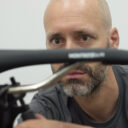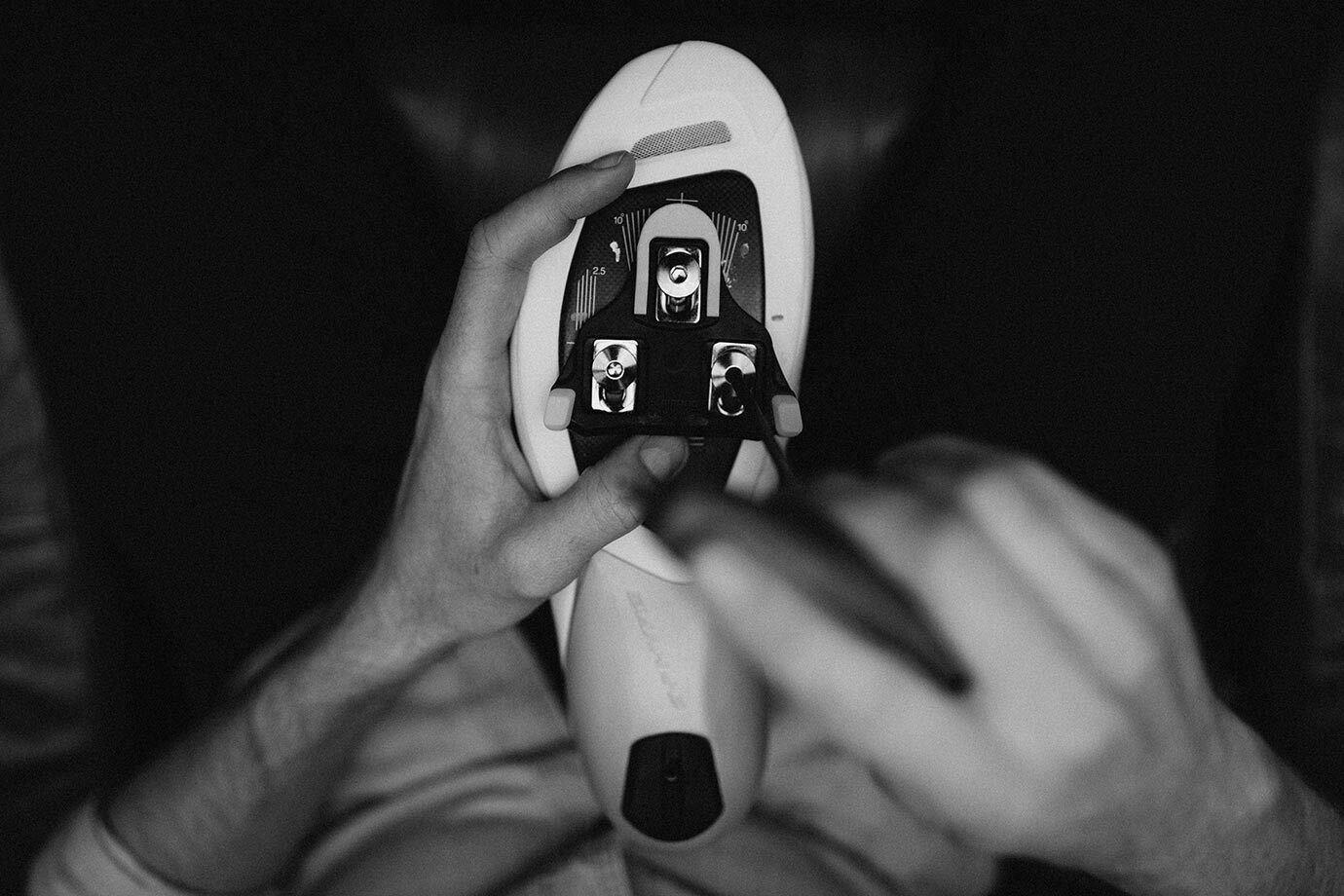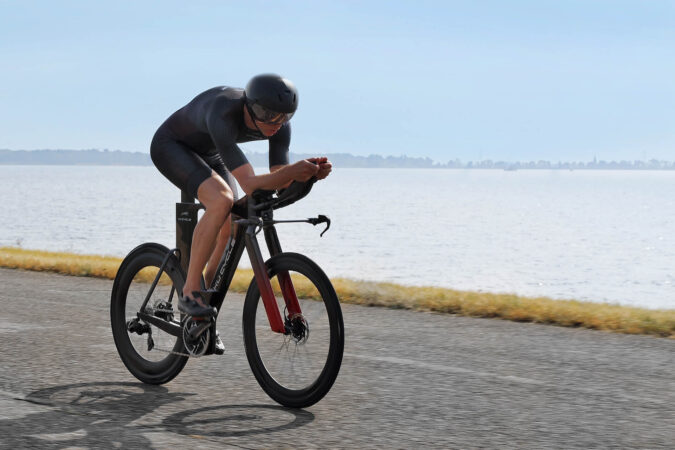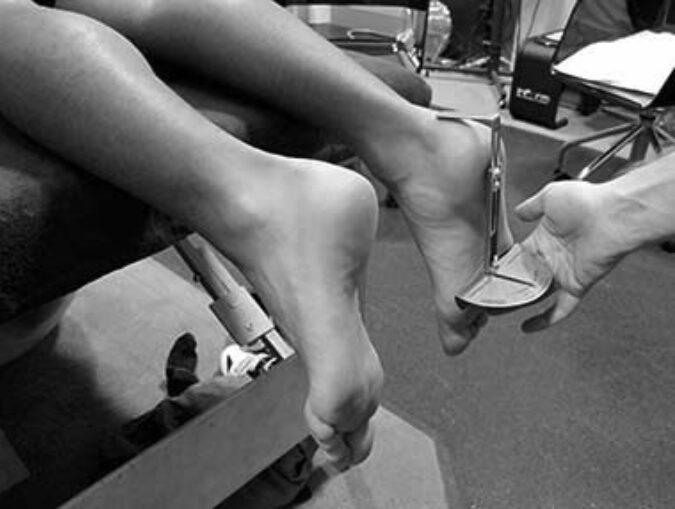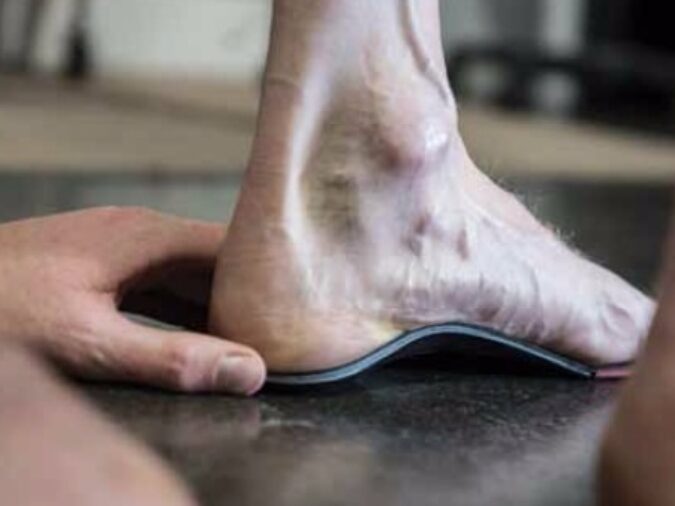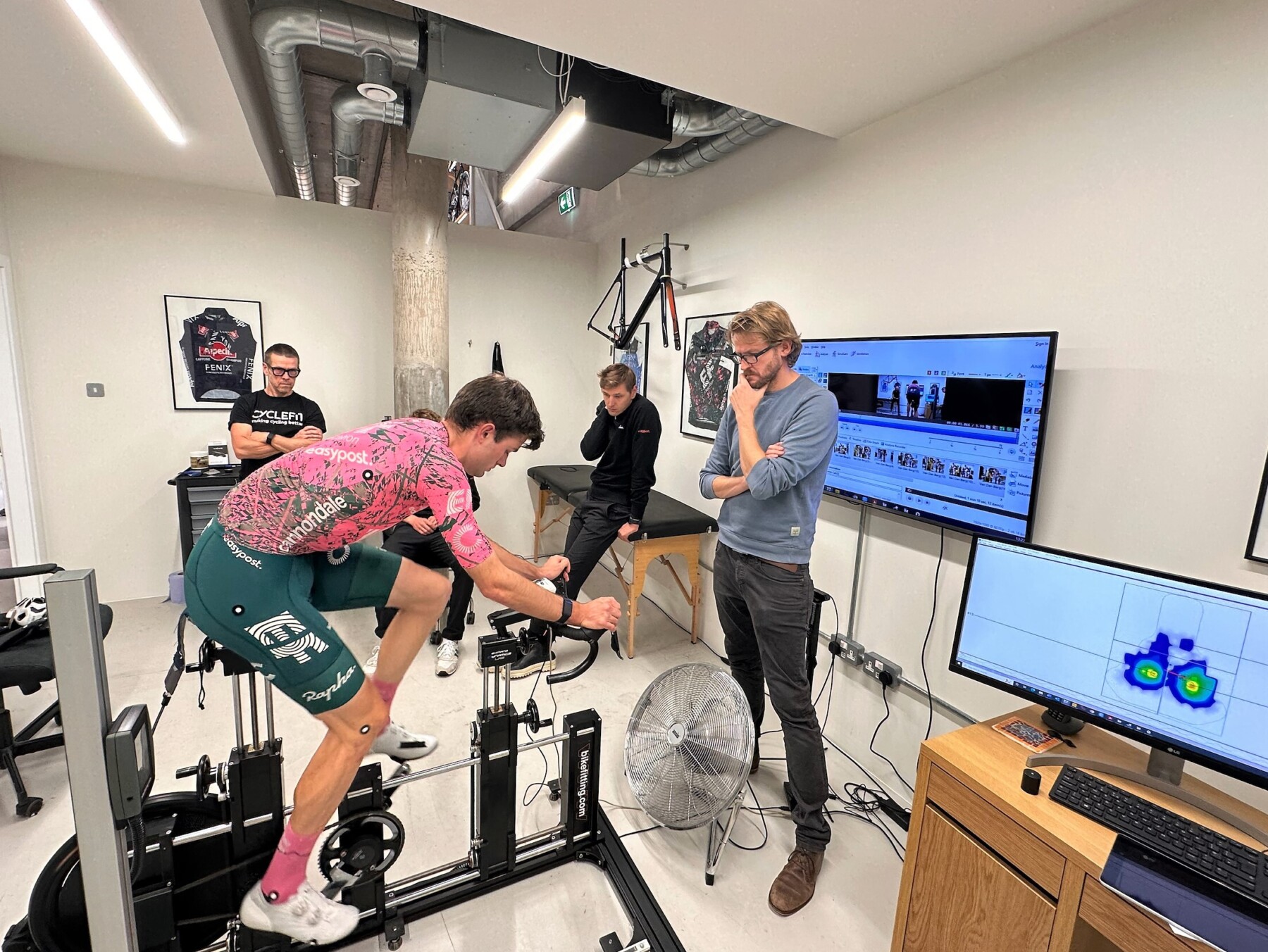"knowing it is right can unlock other routes to resolving issues."
A good connection.
Cleat position is always high on the list of things to be addressed in a bike fit session. It is fundamental to bike set up. A riding position founded on a sub-optimal cleat position is by definition also sub-optimal. This makes it just as important to the bike fitter as it is to the rider. The correct place for the cleat may differ from the one the rider currently uses and finds comfortable. Whereas others spend their entire riding life in flux, constantly tweaking angle, stance width and fore/aft, repeatedly mistaking change for improvement.
Sometimes problems persists in spite of good cleat position so knowing it is right can unlock other routes to resolving issues.
Best foot forward.
So what do we know?
Reducing the distance between the pedal axle/cleat and the ankle in turn reduces the work done by the muscles in the lower leg in order to stabilise the ankle. Efficient power transfer relies on a rigid ankle through the part of the pedal stroke where propulsive force is applied. It is easier to keep the ankle still (as you push on the pedal) when the cleat is closer to the ankle.
Having the cleat behind the ball of the foot (1st metatarsophalengeal joint or 1st MPJ for short) moves the load towards the widest part of the foot and reduces the risk of the other metatarsal joints colliding to impinge nerves and produce hotspots and/or numbness. When the cleat is under or in front of 1st MPJ, we have the worst of both worlds. This situation often results in hotspots, toe numbness and achilles and/or calf issues. Anecdotally and bio-mechanically, the starting position for the pedal axle/cleat must be at least 10mm behind 1st MPJ.
A rule of thumb.
The longer you ride, and the more steady-state your effort, the more you will benefit from a rearward position. This makes sense for endurance riding in general and especially for long distance triathlon where the condition of achilles and calf post-ride is of paramount importance.
The shorter and more stochastic your effort, for example criteriums and most track disciplines, the further forward (towards 10mm behind 1st MPJ) you can go. It feels easier to react to and match accelerations, and less time is spent at a steady-state.
Other factors affect this decision. The bike fit process looks at these in detail. They are specific to the individual and to the particular flavour of bike riding planned.
Angle of dangle
The internet says that the cleat angle should be matched to the angle that the feet naturally adopt. You sit on a table and observe what your feet do. If you are heel in, you should allow this to happen on the bike by angling the cleat to point towards the big toe. This method holds to a certain extent, but if you have to allow the heels to come in to maintain good knee tracking and/or your heels contact the cranks or chainstay, then there may well be more to it.
If the foot is unstable and the arch collapses under the force of pedalling, the ankle can roll in. The knee follows and tracks medially. This can result in knee pain. In this case, setting the cleats up to allow the heels to come in is a compensation for foot instability. It treats a symptom not the cause. Foot control in the form of arch support negates the need for extreme angle cleat set up and avoids the heel contact issues that often arise.
The foot is Prince!
We have heard this before, but it bares repeating. If the foot is stable in the shoe, the need for extreme angle adjustment diminishes. Any micro adjustment can be accommodated by pedal float. If you are constantly fiddling with cleat position, it is likely that foot stability is the culprit. A foot assessment and Sidas Custom footbeds or possibly referral to Mick Habgood could be the way resolve the issue before it gets to the cleat.
The stance width factor.
Stance width (often referred to as Q-factor) is important in order to allow the knee to stay beneath the hip and above the knee. Lateral knee pain and IT band discomfort can often be remedied by increasing stance width. This can mean moving the cleat inboard, or using a longer axle pedal.
Working this out objectively requires the foot and pelvis to already be stable. Only then can frontal plane analysis be used to observe what is happening to the knee.
The bigger picture.
A good bike fit is a jigsaw puzzle. Cleat position is a crucial piece but it's place and orientation are not necessarily obvious or even identifiable until the surrounding pieces are there. Some fall in without any problems, others take more consideration and sometimes experimentation. Cleat position can be one of the easy ones or it could be the only one left at the end.
Cyclefit's multi disciplinary team work collaboratively using their individual experience and skills to complete the most complex bike fit jigsaws.
5 key points:
- Toe numbness and calf strain could mean the cleat is too far forward.
- The longer you ride, the more relevant a rearward cleat position becomes.
- Precise cleat positioning is almost impossible without a stable foot.
- If you have tried multiple cleat positions without success, the problem is elsewhere (see above).
- Cleat position is part of a jigsaw.
